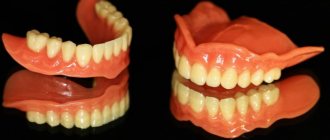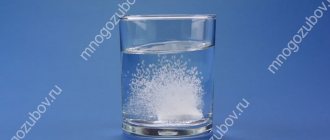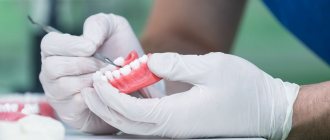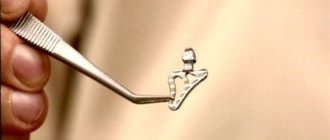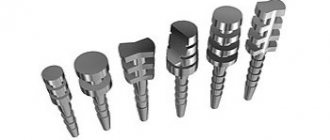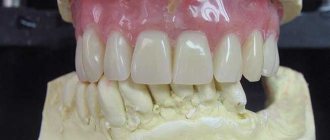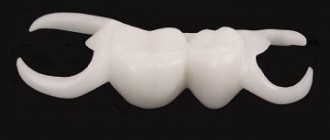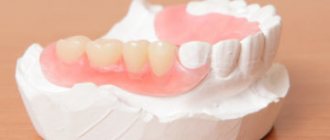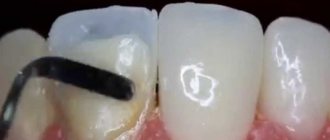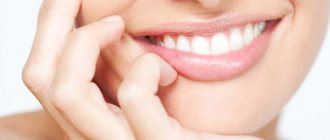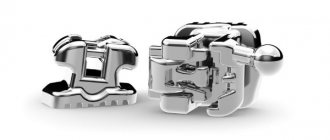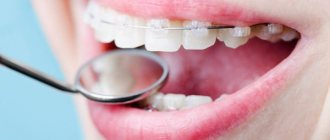BASIS
Hot polymerization plastic for denture bases
Method of use
Application of release varnish:
Apply a small amount of release varnish (AppolonSep) to the plaster model and allow to dry.
Mixing and cooking:
a) Measure out 10% more powder than the weight of base wax used.
b) Pour the liquid into the mixing container, then add the powder (100g powder per 43ml liquid). Cover the container and leave for 15 minutes at 23 degrees Celsius.
c) The plastic is ready as soon as it reaches a doughy state
Filling and pressing:
Fill the model with plastic in a dough-like state and press it down using a polyethylene pad to avoid contact with the skin. Further pressing will be carried out without a polyethylene gasket.
Polymerization and cooling:
a) Place the cuvette in water. Heat the water to 95 degrees for 30 minutes. It is not recommended to heat water to boiling point . Boil the plastic in water for 30-40 minutes until complete polymerization.
b) Remove the cuvette from the water and leave to cool at room temperature for 30 minutes, then immerse the cuvette in cold water to cool completely. Remove the prosthesis from the cuvette.
Polishing and replacement:
a) Processing and polishing is carried out in the usual way.
b) For replacement, you can use self-curing acrylic plastic for bases - Re-FineBright.
| Basis | JIS standard | ||
| Plasticity(mm) | 32 | More than 27.00 mm | |
| Water absorption (mg/sq.cm) | 0,55 | Less than 0.7 mg/sq.cm | |
| Solubility (mg/sq.cm) | 0,015 | Less than 0.04 mg/sq.cm | |
| Fracture strength | 3.5 kg*f | 1,7 | Less than 2.0 mm |
| 5.0 kg*f | 4,5 | More than 2.2 mm but less than 5.0 mm | |
| Color change | Under the influence of sunlight | Doesn't change color | Does not change color within one hour |
| Under the influence of high temperature (boiling) | Doesn't change color | Does not change color within one hour | |
Attention:
Do not use on patients experiencing any allergy such as rash or dermatitis to this material.
- If the patient exhibits signs of an allergy, immediately discontinue use of this material and encourage the patient to consult a physician immediately.
- Avoid skin contact with liquid or mixture of liquid and powder. If the mixture comes into direct contact with the skin, wipe with a cotton swab soaked in alcohol and rinse with water. If liquid gets into your eyes, rinse with water and consult a doctor immediately.
- Keep plastic away from open flames.
- Work with plastic in a well-ventilated area.
- Before installing the prosthesis, rinse it in water to remove excess monomer.
- Avoid exposing the material to high temperatures.
- Store the material in a dark and cool place where the use of open flame is strictly prohibited. It is not recommended to store large amounts of material in one place.
- The material should always be sealed after use.
- Use plastic only to create basic dentures.
Colors: Light pink (LightPink), pink (Pink), dark pink (DarkPink), streaked (LFPink), colorless (Clear).
Packaging: Powder 1kg, Liquid 500ml.
Manufacturer : Yamahachi Dental MFG.,CO., Japan
The use of elastic plastic in prosthetics of toothless jaws
The need for the use of elastic plastics in a number of cases of orthopedic treatment and especially in prosthetics of toothless jaws is recognized by many clinicians. The development of elastic plastics, as well as laboratory studies of their properties, was carried out by I. I. Revzin and V. A. Marsky and others. The following most common types of elastic plastics of domestic production are known: Egmass-12 (obtained on the basis of polyvinyl chloride), SKhB-20 (copolymer vinyl chloride and butyl acrylate), elastoplast copolymer and cold-curing copolymer - orthosil "M".
Fast-hardening elastic silicone masses are being studied and introduced into widespread clinical practice.
The first elastic plastic used in the Soviet Union, AKR-9, according to M.A. Napadov, loses its elasticity as a result of weak bonding with polymethyl acrylate after 4 months. EGMASS-12 plastic, according to our observations, retains its elasticity longer, up to 1 year. Approximately the same period of time retains the original elasticity of SKhB-20, elastoplast and cold-curing plastic, orthosil “M”.
Based on data from domestic and foreign authors, testifying to the positive properties of some elastic plastics, as well as their harmlessness to the body, we first used EGMASS-12 plastic, and then SKhB-20 copolymer, elastoplast and Orthosil “M” as linings for full dentures. Indications for the use of elastic plastics were unfavorable anatomical and functional conditions of the prosthetic field, large atrophy of the jaws, the presence of extended bony protrusions on the alveolar processes of the jaws, as well as a deep grip within the posterior alveolar region of the lower jaw.
The use of elastic lining for temporary. prosthetics allows you to start prosthetics much earlier after tooth extraction than usual, instead of 3-6 weeks - after 7 days, and also allows you to hand over finished dentures directly on the day of surgery.
During the adaptation of patients to prostheses, usually when using elastic plastic, decubital damage to the mucous membranes does not occur, and there are also no patient complaints of pain in the area of bone protrusions. It should be noted that absorption of chewing pressure is possible only in cases where the soft lining has a layer of at least 3 mm.
Observations made it possible to establish the positive effect of soft-lined dentures on the process of bone tissue formation in the area of extracted teeth, which was facilitated by its massaging effect.
Subsequent observations revealed another positive aspect of the use of elastic plastics. According to subjective assessment, dentures in patients with a soft lining are fixed much better than with a hard base, and this is noted even in the most difficult cases, with complete or uneven atrophy of the alveolar process of the mandible. The better fixation of such prostheses can be explained by a more uniform immersion of their bases on individual areas of the prosthetic field. At the same time, the chewing efficiency of dentures increased by an average of 17-20%. According to masticationography, the rhythm of chewing movements became more uniform and clear, the number of chewing waves decreased, the amplitude of chewing movements of the lower jaw increased, all this indicated the normalization of the act of chewing.
Plastics SKhB-20, elastoplast and orthosil “M” have better performance compared to EGMASS-12 in many clinical qualities, color fastness, and dirt resistance. Of the 192 patients who, for one reason or another, had prostheses made using elastic plastic, only 44 patients had to have similar prostheses made again. This group consisted of patients with complete atrophy of the alveolar process or with increased sensitivity of the mucous membrane.
It should be noted that the technology for manufacturing prostheses with soft lining based on copolymers is much simpler than using EGMASS-12, since the former does not require a special polymerization regime (heating to 160°C, using a vulcanizer when the pressure is brought to 6 atm). Polymerization of dentures with a copolymer lining is carried out at a temperature of about 100°C and without pressure. The usual polymerization regime makes it possible to use this plastic in mass practice. In addition, artificial teeth and bases made of SKhB-20 do not change their original color.
Cold-curing plastics Orthosil “M” and others are even more easy to use, which can be placed under the rigid bases of the prosthesis directly in the patient’s oral cavity.
Many years of experience in the use of elastic plastics for making immediate temporary prostheses have determined their undoubted advantages in terms of facilitating adaptation to complete dentures, especially when patients use dentures for the first time.
However, elastic plastics also have some disadvantages. Thus, elastic plastics become rigid over time and lose their original elasticity. Therefore, if the patient has persistent intolerance to hard bases, the elastic pads must be periodically replaced with new ones as they harden.
Thus, the gradual loss of elasticity by this type of plastic is only a relative disadvantage. The second disadvantage of soft linings is their lack of a sufficiently strong connection with the main, base, plastic. Clinically, this is manifested by greater or lesser detachment of the lining material from the base along the edges of the prosthesis.
All materials for soft linings, both domestic and foreign, are characterized by high water absorption, poor color fastness, and insufficient strength. Clinically, this is expressed in swelling, contamination of the plastic surface, and changes in color. Broken dentures have also been reported. The indicated disadvantages of elastic plastic, and especially low hygiene, limit the scope of its application. The requirements necessary for the clinical use of elastic plastics are as follows: soft plastic must be firmly connected to the base of the prosthesis, have low water absorption and solubility in the oral cavity, be easy to process and clean, and maintain elasticity.
Since we currently do not have such plastic, soft linings should be used mainly for the manufacture of temporary, therapeutic prostheses.
For long-term use, a soft plastic lining should be used for certain indications and, above all, in difficult cases of prosthetics, with a significant degree of atrophy of the alveolar process of the lower jaw. In this case, the soft plastic is intended to, as it were, replenish the missing submucosal layer of the mucous membrane and weaken and absorb chewing pressure on the tissues of the prosthetic bed with their nerve endings, which are located superficially due to large atrophy of the jaw. In addition, elastic plastic can be used to make a denture with elastic “wings” to enhance its retention on the edentulous lower jaw in cases where there are deep grips in the distal parts of the lower jaw, within the posterior alveolar region.
So, soft plastics are shown:
- 1) for temporary therapeutic and immediate dentures: a) in the presence of bone protrusions on the jaws remaining after tooth extraction;
- b) to facilitate adaptation to removable dentures in elderly patients;
- a) with significant atrophy of the toothless lower jaw, associated with increased pain sensitivity of the mucous membrane;
For illustration, here is an extract from the medical history:
Ya-ich T. Ya., doctor, 70 years old. Diagnosis. Absence of all teeth on the upper and lower jaws. Complaints about weak fixation of the prosthesis! on the lower jaw and the phenomena of paresthesia in the lower lip area: unsatisfactory aesthetic effect.
History: I lost teeth as a result of caries. She has been using removable dentures for many years. The last dentures (complete) were made 6 years ago. The prosthesis for the lower jaw is “weighted” with cast metal teeth. At the TsOLIU clinic, doctors made new prostheses, which the patient used well, but aesthetically they did not satisfy her. The phenomena of paresthesia in the lower lip also continued, for which the patient was repeatedly offered alcoholization of the mental nerve.
Local status: in the upper jaw - complete absence of teeth, 2nd degree of atrophy of the alveolar process, in the frontal area there is complete atrophy of the alveolar process with the presence of a mobile mucous membrane. On the lower jaw there is complete atrophy of the alveolar process, especially pronounced in the premolar and molar zones.
Treatment plan. To achieve an aesthetic effect, it was decided to raise the bite. To prepare the neuromuscular system, a removable mouth guard was made for the lower jaw prosthesis. In the future - new dentures for the lower jaw, a denture for the lower jaw with a soft lining. No adjustment of the prostheses was required. The dentures were stable during speaking and chewing. There were no complaints. The phenomena of paresthesia in the lower lip area also disappeared. Chewing efficiency - 85%. The result of prosthetics is positive.
Basic plastics, stages of maturation. Polymerization mode
All topics in this section:
SINMA-74 Sinma-74 is an acrylic fluorine-containing copolymer of hot-curing powder-liquid type.
PURPOSE: Sinma-74 plastic is used in the ortope SINMA-M Sinma-M is a hot-curing acrylic plastic of the powder-liquid type. PURPOSE: Sinma-M plastic is used in orthopedic dentistry
Base wax. Compound. Property. Application Composition: 78% paraffin 22% beeswax 0.04% dyes softening t 36-40 C melting t 50-63 C
Group - Thermoplastic impression materials Hard-crystalline impression materials include gypsum and masses consisting of zinc oxide EUGANOL and GUIACOLA (dentol, repin)
Silicone impression materials Currently, this group is increasingly used in dentistry, but the high cost of these materials still limits their use, but the future of impression materials undoubtedly belongs to si
Thiakol impression materials The base is thiacol rubber. Representatives: Tiodent Tiodent-M - consists of 2 pastes: main-white corrective-colored, which are mixed in a ratio of 4:1
Thermoplastic impression materials The entire group of thermoplastic impression materials has one common property - the ability to soften when heated and harden when cooled. Typically composed of thermoplastics with
Composition of dental porcelain. Porcelain masses for metal-ceramic dentures Porcelain masses used in orthopedic dentistry consist of: feldspar (60-75%) quartz (15-35%) kaolin (3-10%)
Protective equipment for dental technicians Protective equipment for dental technicians is divided into PERSONAL and GENERAL. Personal includes: 1 Special
Safety precautions when working on a grinding motor Before starting work: 1 Clean up your work area, remove all unnecessary items, check and prepare the necessary tools for work. 2 Check that the grounding, wires, and sockets are correct.
Safety precautions when working with acids Before starting work, make sure that the container in which the acid is located must have an inscription with the name of the acid it contains. Check if the container is broken or doused with acid.
Ethacryl. Compound. Property. Application. Polymerization mode Ethacryl-02 is a hot-curing synthetic material of the powder + liquid type. Has increased plasticity at the time of formation and good elasticity after polymerization MONOMER-M
Fast-hardening plastics. General characteristics. Compound. Method of application In our country, fast-acting plastic was proposed in the 50s under the name AST. In the 70s, high-speed plastics were allocated to an independent group of materials, which include.
Sielast-03. Compound. Properties application Sielast-05 is a cold-curing filled silicone composition consisting of 2 pastes - the main one (light green color) and
Safety precautions when working with abrasive materials A dental technician uses abrasive materials when processing, grinding and polishing various removable, fixed, clasp, orthodontic, maxillofacial prostheses.
Elastoplast. Boxil. Compound. Scope of application Elastoplast is an elastic plastic based on a copolymer of vinyl chloride with butyl acrylate. Release form: powder + liquid Polymerization: in one hour, bring to
Disadvantages of alginate impression materials Alginate impression materials consist of sodium layers of alginic acid, it is a powder that swells in water and forms a colloidal gel system.
Hardness of materials The hardness of materials is understood as its resistance to deformation on the surface under the established mechanical influence on it of another harder body of a given shape and size, which does not change.
Orthocor Properties: impression material produced in the form of large plates of brown tones. It has high plasticity when cold, so each plate in the package is repositioned
Low-melting alloys. Compound. Properties. Application, requirements They occupy an important place in the work of a dental technician, although they belong to auxiliary materials. It is used 1. when stamping crowns 2. when making dies and counter-dies
Dental PURPOSE: used for modeling crowns, veneers, pin teeth, reproduction of the frame of a bridge. COMPOSITION: contain
Modevax PURPOSE: Modevax is used in orthopedic dentistry for modeling fixed one-piece metal-ceramic and metal-polymer prostheses. Modevax
Polishing agents used in fixed prosthetics The polishing process is not fundamentally different from grinding: under the action of abrasive grains, a layer of material is removed from the surface being treated. Polishing is carried out in order to give the surface
Gold, its alloys, gold samples used in dental prosthetics. Compound. Properties. Application Gold is found in nature in the form of large pieces (nuggets) or loose gold, that is, a mixture of gold with river sand. The only chemical compound of gold in nature is COLOVERIDE.
Thermoplastic impression materials. Compound. Application. Methodology for obtaining models from impressions obtained from thermoplastic masses The entire group of thermoplastic impression materials has one common property - the ability to soften when directed and harden when cooled! As a rule, the composition of thermoplastic
Х18 Н9 Т Stainless steel became widely used in the 30s. Since the introduction of stainless steel into denture practice, it has become possible to almost completely replace expensive metals and prosthetics
Tiodent. Compound. Properties Application Base: thiacol rubber. Representatives: Tiodent Tiodent-M-consists of 2 pastes: main-white corrective-colored, which are mixed in a ratio of 4:1 Quality
VOSKOLIT 03 Used for modeling frames of clasp dentures and its elements Composition: 54% paraffin 22% cerisine 20% beeswax 4% carnauba 0.1% kra
Low-melting alloys. Compound. Properties. Application, requirements They occupy an important place in the work of a dental technician, although they belong to auxiliary materials. It is used 1. when stamping crowns 2. when making dies and counter-dies
Gypsum. Its property. Gypsum production. Storage Rules Gypsum In our country, gypsum is most widely used in orthopedic dentistry. Using plaster, you can take impressions of denture rows and jaws and prepare masks
Second method Open method. Gypsum is placed in a cooking pot and the temperature is gradually added to 165 C and the temperature is maintained for 10-12 hours, after which it becomes semi-aqueous. Next, the gypsum is sorted on sieves and introduced into
Akrel. Ftorax. Compound. Properties. Application. Polymerization mode FTORAC is hot-curing powder+liquid type plastic. Based on fluorine-containing acrylic copolymers. The powder is pink, but the finished prosthesis is made of fluorex in
Chills for steel and gold. Application, influence on the thickness of products When heating metal objects, intensive oxidation of the surface occurs, which is covered with an oxide film-scale. This film has great hardness and brittleness, in some cases
Stomaplast. Compound. Properties. Application Refers to thermoplastic impression materials. In the form of a greenish mass poured into a metal ladle. Intended for obtaining functionally suction casts of edentulous jaws. WITH
Mechanical properties of materials. Elasticity The ability of a material to provide increasing resistance to deforming forces, change size and shape under their influence, and return to its original state after removing the load is called
Artificial teeth made of plastic. Preparation method. Advantages and disadvantages in comparison with porcelain teeth Acrylic plastics are used to make not only the bases of removable dentures, but also artificial teeth. Unlike porcelain teeth, the technology of factory production of plastic
Soldering agents (fluxes) properties, use in soldering The most common flux for soldering prostheses made of steel and gold is borax. It protects the soldered surfaces and cleans them from acids that prevent the diffusion of solder into the base metal. Spaiv
Advantages 1 Easy preparation of the mass and its introduction into the oral cavity 2 Removal from the oral cavity as a whole 3 The mass is easily separated from the model 4 Little time is spent on removal from
Gypsum. Its property. Gypsum production. Storage Rules Gypsum In our country, gypsum is most widely used in orthopedic dentistry. Using plaster, you can take impressions of denture rows and jaws and prepare masks
Elastic plastics (Eladent, Orthosil, Boxil). Composition, properties. Application of Boxil for the production of bucker tires. Composition: cold vulcanized silicone rubber. Keep in the press for 3 hours. 30 minutes in soda solution, then
Solders for steel and gold. Compound. Properties. Requirements for them. Application Soldering is the process of rigidly joining metal parts by melting filler material - solder, which has a melting point lower than the base metal. Connection from to
Base wax.Composition. Property. Application Composition: 78% paraffin 22% beeswax 0.04% dyes softening t 36-40 C melting t 50-63 C
Gypsum. Obtaining dental plaster. Super plaster. Properties of dental gypsum. Strength of gypsum Gypsum In our country, gypsum is the most widely used in orthopedic dentistry. Using plaster, you can take impressions of denture rows and jaws and prepare masks
Second method Open method. Gypsum is placed in a cooking pot and the temperature is gradually added to 165 C and the temperature is maintained for 10-12 hours, after which it becomes semi-aqueous. Next, the gypsum is sorted on sieves and introduced into
Dentafol. Compound. Properties. Application Dentafol is a thermoplastic impression material. Designed to obtain high-precision functional casts of edentulous jaws, especially with significant atrophy of the mucous membrane of the jaw
Hardness of materials. The concept of hardness. Hardness measurements The hardness of materials is understood as its resistance to deformation on the surface under the established mechanical influence on it of another harder body of a given shape and size, which does not change.
Redont. Compound. Property. Application Redont is a self-hardening plastic, which is a copolymer of methyl and ethyl esters of methacrylic acid, commercially produced in the form of a preparation consisting of powder and liquid.
Molding materials. General information. Compound. Method of application For the production of various materials or their parts in dental laboratories, precision casting or molding methods are used. The essence of these methods is that the material in the molten
Tiodent Tiodent-M- consists of 2 pastes: basic-white corrective-colored, which are mixed in a ratio of 4:1. A high-quality impression can be obtained using theodont and theodont-M
Rules for mixing gypsum. Catalysts and inhibitors. What does the strength of gypsum depend on? The process of accelerating or slowing down the setting of gypsum can be regulated if catalysts are used - substances that accelerate the setting of gypsum, this is a 3% solution of table salt
Thermomass 1; 2; 02. Composition. Properties. Application Thermomass No. 1 is produced in the form of round plates of dark red color. It softens at 50-60 C, hardens at 20-25 C for 3 minutes and is used to remove functional marks.
Elastic plastics. Their scope of application Elastoplast is an elastic plastic based on a copolymer of vinyl chloride with butyl acrylate. Release form: powder + liquid Polymerization: in one hour, bring to
Safety precautions when working with gasoline When working with gasoline, remember that this liquid is flammable, flammable, and if not handled carefully, a fire may occur. Smoking is strictly prohibited during work.
Biological properties of materials The biological properties of materials mean their possible impact on the biological environment in which they are located. Thus, all basic dental materials should not cause negative
Thermoplastic impression materials (Stens, Acrodent, Thermomass 02) composition. Properties. Application. Method for obtaining STENS 02 models - produced in the form of round plates of different tones, softens at a temperature of 45-55 C, hardens at 35-37 C, used in dental practice for the manufacture of auxiliary
THX. Compound. Properties. Applications Silver-palladium alloy was developed in the 30s and was called pollargens. Authors: Kurpansky in collaboration with Tsitrin and Lipets. Each author gives his own recipe for the alloy. But at any time
Silicate molding materials Quartz sands are used for the preparation of molding sands used in casting alloys with a high melting temperature of over 1000 C. SILICON OXIDE is the main component of the mixtures. She will come
Types of porosity formed in plastic Violations of polymerization modes as well as improper mixing, porosity is formed in plastic. There are 3 types of porosity: 1. gas 2. granular 3. compressed porosity
Elastic base plastics Hot curing plastics: MONOMER-MMA-methyl ester of methacrylic acid. Colorless liquid with the odor of ocetone Density 0.955 g/cm3 boiling point 1
Cold-curing plastics are fast-acting or self-hardening. Polymerization of cold-curing acrylic plastics occurs according to the system: ACTIVATOR-INITIATTOR. As an activator that is added to mono
Elastic base plastics are used for the manufacture of: 1. dentures with soft linings. 2. in maxillofacial orthopedics (prosthetics) 3. in the elimination of birth defects 4. for prosthetics
Plastic polymerization mode There are 2 plastic polymerization modes. 1. Water bath: a cuvette with preformed plastic is placed in water at room temperature and the water temperature is gradually increased to 80 C during
Heat treatment of metals and alloys is a process involving heating and cooling. Dental technicians use annealing and hardening. Hardening is the process of heating a metal and rapidly cooling it in water.
Safety precautions when working with plastic When working with plastic, you should be aware that the monomer (liquid) is highly flammable, irritates the respiratory tract and has a negative effect on the skin of the hands. BEFORE WORK STARTS
Repin. Dentol. Compound. Properties. Application REPIN-Czechoslavak mass-zincoxide eugenal paste of white and orange color. The pastes are thoroughly mixed 1:1 and a very plastic mass is obtained, almost non-shrinking. Applies
Types of artificial porcelain teeth used in orthopedic dentistry Artificial crowns, bridges, inlays, and coatings for metal dentures can be made from porcelain masses. In the laboratory, a dental technician makes porcelain teeth
K.H.S Composition. Properties. Application K.H. were introduced for the first time abroad in 1933 under the name VITALLIUM. In our country in 1953, Doynikov co-developed the alloy K.H.
Formative materials used for processing, grinding, polishing removable dentures All parts of dentures and devices after manufacturing in the laboratory must undergo careful finishing, grinding and polishing. They remove excess material, protrusions, irregularities, making the surface dentally
Elastic plastics, release form, purpose.
Elastic plastics are used as soft, shock-absorbing pads for removable denture bases. They must be firmly connected to the base of the prosthesis, maintain elastic properties and constant volume when using the prosthesis. Have good wettability and an elasticity index close to the elasticity index of the mucous membrane of the cavity of the prosthetic bed. Temporary elastic liners, or fabric conditioners, are used in the mouth for a short period of about a few weeks, although some successful formulations are known that remain elastic and remain on the surface of the base for many months. .Elastic plastics are produced by hot and cold vulcanization.
Hot vulcanized plastics: Eladent; "Eladent-100"; "Orthosil"; “PM – 01”, “Elastoplast”, “GosSil”.
" Eladent" - Copolymer of MMA - 95% and styrene - 5%, retains elasticity for a long time.
" Eladent - 100" - is used mainly for soft linings to relieve pain under the prosthesis and improve the fixation of the latter, has good elasticity, is long-lastingly resistant to oral fluid, and fuses well with the base of the prosthesis. Available in the form: P - suspension copolymer of vinyl chloride with butyl phthalate - 99.97%; opacifier - titanium dioxide - 0.005% and dye - 0.025%; F - dioctyl phthalate - it is both a plasticizer and a monomer. . The plastic is ready for use immediately after mixing the powder and liquid. The polymerization mode of Eladent coincides with the mode of the plastic that is used as a rigid base. A good connection of both plastics occurs when they come into contact in a dough-like state. When combined with a polymer, it forms a soft rubbery mass.
" Ortosil" was first used in 1963. Trisilane was used as a catalyst and cross-linking agent. Insufficient elasticity, water absorption, and the need for additional heating after vulcanization at room temperature led to the search for more advanced materials.
Plas is an elastomer based on a copolymer of vinyl chloride with butyl acrylate and is available in the form of P and Zh. The gasket made of “PM-01” is characterized by long-term softness and is firmly connected to the base. It is used for two-layer bases, with a sharp ridge and in the presence of longitudinal folds on the mucous membrane. To prepare plastic, take 10 g of powder and 6-7 ml of liquid and mix. Form into a cuvette, place in a water bath at room temperature and bring to 100°C in 50 minutes, hold for 30-40 minutes and cool in air.
"Elastoplast" - used for the manufacture of boxing splints or mouthguards. The powder is a copolymer of vinyl chloride and butyl acrylate, plasticized with dibutyl phthalate. Liquid dibutyl phthalate. For one mouthguard, take 25 grams of powder and 15-17 ml of liquid, place them in a mortar or rubber flask and grind thoroughly until a homogeneous mass is obtained. The finished mass is placed in a mold and slowly pressed. Clamp it into a clamp and transfer it to water at room temperature. In 50-60 minutes, bring the water temperature to 105-109°C (this is possible at normal atmospheric pressure only by boiling a strong saline solution) and boil for 50-60 minutes. Remove the cuvette from the water, cool the plaster mold until it feels warm, remove the mouth guard and treat the area of the seams with scissors.
“GosSil” is a hot-vulcanized plastic proposed by MGMSU employees. It is used for the manufacture of gaskets for the bases of prostheses with class 2 mucosa according to Suppli, with intolerance to acrylic plastics, for the manufacture of maxillofacial prostheses; its thickness can vary from 1.8 to 2 mm. Available in the form of trapezoidal plates, covered on both sides with a protective film, and a bottle with 15.0 ml of adhesive.
Elastic plastics of cold vulcanization - “ Ortosil - M”, “Mollosil”, “Flexon”, “Correntyl”, “Molloplast - B”.
"Ortosil - M" is an elastic plastic, the constituent element of which is cold-vulcanized silicone rubber. Cures in the oral cavity in 4-5 minutes. Available in the form of a paste in a tube and two catalysts No. 1,2. The paste consists of polydimethylsiloxane - 62.97%; modified aerosil - 15.74%; zinc oxide -11.34% and redoxside dye - 0.5%. Catalysts are applied to the paste in equal quantities, thoroughly mixed, and before applying to solid plastic, the latter is etched with a special liquid, which is contained in Ortosila-M.
“Molloplast” can be used to isolate sharp bony protrusions, to improve fixation of the SSPP in case of complete atrophy of the alveolar process. It is also used to make boxing splints, palate obturators and bruxism splints.
"Mollosil" can be used for the restoration of dentures in case of cracks and fractures of the bases, for shaping the edges, isolating the torus and exostoses, and creating a soft lining in the prosthesis.
In addition, special elastic plates are produced for the manufacture of soft pads, painted pink or colorless. The size of these plates can be different; for the upper jaw they are produced in the form of a trapezoid, and for the lower jaw - in the form of a horseshoe. The Americans produce PLAS - a polyphosphazene fluoroelastomer, produced in the form of plates laminated to polyethylene and stored in the refrigerator. Also used as a gasket and pad.
Polyamide base materials (nylon).
Polyamides (nylons) are among the most common polymers. Polyamides are heterochain polymers containing macromolecules in the main chain - amide groups. Polyamides can be aliphatic or aromatic depending on which radicals the -CO-NH- groups are attached to.
Only non-toxic polyamides are used in dentistry. Polyamides are processed by casting, injection molding, extrusion and compression molding. Parts made of polyamides can be welded (by heat welding or high-frequency currents) or glued with solutions of the same polymer in polyhydric phenols or formic acid.
Polyamide is the first synthetic polymer whose physical properties exceed those of some metals. It has an incredible combination of properties - high strength, medium hardness and resistance to high temperatures, fuels and lubricants and most chemicals.
“Valplast” is a flexible dental plastic used for the manufacture of removable dentures for unilateral and bilateral end defects of the dentition.
“Flexi – J” is a nylon thermoplastic polymer, elastic and translucent, available in 4 color shades.
“Flexi-Nylon” - an exclusive formula and stable dyes allow you to achieve maximum aesthetic results and comfort when using the prosthesis. Prostheses made from Flexi-Nylon are highly durable and light in construction.
Flexite supreme is a thermoplastic with exceptional strength and flexibility, available in light and dark pink shades. To impart rigidity to the base (in the case of making a complete removable denture), it is recommended to mix the material with acrylic components, which made it possible to expand the range of use.
